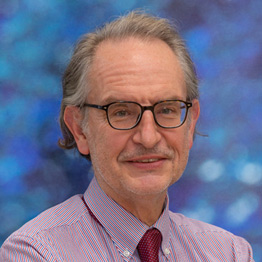04/10/2022
Published in
Diario de Navarra
Francisco Javier Novo Villaverde
Full Professor from department of Biochemistry and Genetics of the School of Sciences of the University of Navarra.
 Since the publication of the human genome sequence in 2003 we have catalogued our diversity Genetics in enormous detail, and today we can know the geographic origin of any human simply by reading their genome. Which begs the question whether we could not do something similar to delve deeper into the tree of recent human evolution. We know that anatomically modern humans share a common African ancestor with Neanderthals, a species of humans that lived outside Africa until becoming extinct in Europe 30,000 years ago. But the fossil remains do not give us details about when we diverged or what our relationship with them was. If we could read the complete genomes of archaic species of humans, to better understand the Degree kinship that unites us, we would make a quantum leap in understanding how we came to be the species we are. Twenty years ago nobody believed that it would be possible to obtain genomes from remains thousands of years old, because the DNA of such ancient samples is in very poor condition. Yesterday's winner of the award Nobel Prize in Physiology or Medicine believed that it could be done, and through tenacity and ingenuity he succeeded.
Since the publication of the human genome sequence in 2003 we have catalogued our diversity Genetics in enormous detail, and today we can know the geographic origin of any human simply by reading their genome. Which begs the question whether we could not do something similar to delve deeper into the tree of recent human evolution. We know that anatomically modern humans share a common African ancestor with Neanderthals, a species of humans that lived outside Africa until becoming extinct in Europe 30,000 years ago. But the fossil remains do not give us details about when we diverged or what our relationship with them was. If we could read the complete genomes of archaic species of humans, to better understand the Degree kinship that unites us, we would make a quantum leap in understanding how we came to be the species we are. Twenty years ago nobody believed that it would be possible to obtain genomes from remains thousands of years old, because the DNA of such ancient samples is in very poor condition. Yesterday's winner of the award Nobel Prize in Physiology or Medicine believed that it could be done, and through tenacity and ingenuity he succeeded.
Svante Paabo, researcher Swedish based in Germany, took his first steps with Allan Wilson, a pioneer in the study of human mitochondrial DNA who proposed the "mitochondrial Eve" hypothesis. In 1990 Paabo began work on the possibility of sequencing DNA from archaic human remains, and succeeded in reading a small region of the mitochondrial genome from a 40,000-year-old Neanderthal bone. This launched the field of paleogenomics, with the enormous challenge of reading the complete nuclear genome of very ancient remains.
After years of relentless work , Paabo and his team achieved the impossible, and discovered that all modern humans -except those of African origin- carry in our genomes a small percentage of Neanderthal genetic variants. And this technology astonished us again a few years later, when they recovered genetic sequences from a phalanx found in a cave in Siberia, and proved that it was a species related to Neanderthals, but clearly distinct: the Denisovans. For the first time, a species had been identified by its genome, rather than by its remains. And we also learned that modern humans living in Asia carry variants of these mysterious inhabitants of Central Asia in their genes.
Aside from the advances in the knowledge of our own species that have been made possible by the analysis of archaic genomes, the story of the new awardee illustrates very well something that makes the scientific work so fascinating: the possibility of dreaming the impossible.
